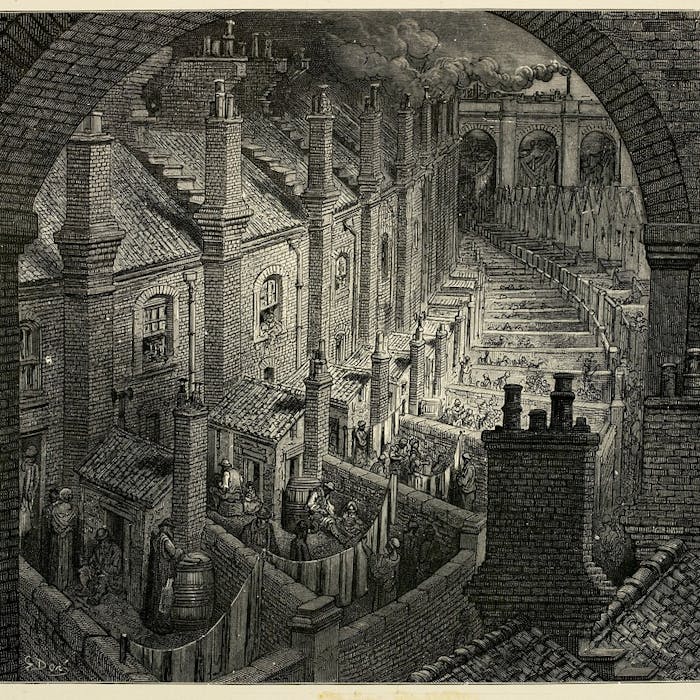
Doré’s engravings: the archetypal look of Victorian London
Illustrator Gustave Doré shares significant responsibility with writer Charles Dickens for shaping the collective memory of the murky squalor of Victorian London. His engraving, 'Over London by Rail', shown above, provides a visual equivalent of the Dickens novels that take us into the workhouses, the slums, the dark alleys and the opium dens.
Gustave Doré (1832 – 1883) was a prolific engraver, artist, illustrator, and sculptor, who became very popular both in France and England as a successful illustrator for books and magazines.
Doré was born in Strasbourg, France, and by age 5 he was a child prodigy artist, creating drawings that were mature well beyond his years. Wood-engraving was his primary method, and he went on to win commissions to depict scenes from books by Cervantes, Rabelais, Balzac, Milton, Dante and Lord Byron. Doré also illustrated an oversized edition of Edgar Allan Poe's "The Raven".
Doré's illustrations for the Bible (1866) were a great success, and in 1867 Doré had a major exhibition of his work in London. This led to the foundation of the Doré Gallery in Bond Street. In 1869, Blanchard Jerrold suggested that they work together to produce a comprehensive portrait of London. Jerrold had obtained the idea from The Microcosm of London, published in three volumes from 1808 to 1810. Doré signed a five-year contract with the publishers Grant & Co that involved his staying in London for three months a year.
For the next four years, Jerrold and Doré explored the dark underbelly of the largest city in the world at the time, visiting night refuges, staying in cheap lodging houses and visiting opium dens. The duo were often accompanied by plain-clothes policemen.
In 1872, the completed book, London: A Pilgrimage, with 180 wood engravings, was published and was a great commercial success. His paintings remain world-renowned, but his woodcuts and engravings, like those he did for Jerrold, are where he excelled as an artist with an individual vision.
Though he gives us such an enduring image of the poverty of many Londoners, Doré’s scenes were mostly impressionistic rather than documentary, as he disliked sketching on location and relied on his memory and impressions back at the studio.
Further reading
Links to external websites are not maintained by Bite Sized Britain. They are provided to give users access to additional information. Bite Sized Britain is not responsible for the content of these external websites.
